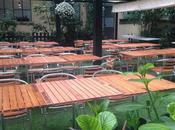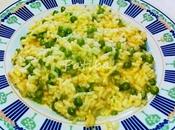
Martirio di Santa Rufina e Seconda, Crespi, Morazzone, Procaccini
Pinacoteca di Brera
Ultimamente una serie di coincidenze mi hanno avvicinata a i secolo XVI e XVII in Italia: devo ammettere che sono dei periodi storici interessanti! Gli intrighi di corte, i giochi di potere e gli equilibri politici creano un quadro appassionate che nulla ha da invidiare ad un film dei giorni nostri! L’arte di quei secoli? Che meraviglia! Leonardo aveva lasciato la sua influenza e il Caravaggio avrebbe determinato nuove caratteristiche nella pittura facendo emergere dal buio le figure con giochi di luce nuovi. Furono secoli dove al chiesa aveva un grande potere temporale in Italia creando delle situazioni che oggi definiremmo improprie e ambigue. Un esempio? Ho scoperto che papa Alessandro VI aveva figli illegittimi. La più famosa? Lucrezia Borgia. Nonostante questo il concilio dei Trento del 1530 definì quelle che sarebbero dovute essere le linee di rappresentazione iconografica per i dipinti sacri. Quante contraddizioni anche allora. In ogni caso durante queste uggiose giornate la pinacoteca di Brera a Milano organizza delle vere e proprie lezioni d’arte incluse nel biglietto. La pinacoteca di Brera è il mio rifugio per eccellenza. In quel logo trovo pace e bellezza, cosa posso chiedere di più? Durante la scorsa lezione di arte ho scoperto un dipinto che volevo condividere con voi. Si intitola il Martirio di Sante Rufina e Seconda. Si tratta di un olio su tela di grandi dimensioni. La sua particolarità? Questo quadro è dipinto a tre mani. Certo, non è l’unico esempio in arte di lavoro condiviso da più autori. La sua particolarità è che fu dipinto da tre dei maggiori rappresentanti dell’arte lombarda del Seicento. I tre pittori sono Crespi, detto il Cerano; Mazzucchelli, detto Morazzone e Procaccini. Se osservate il quadro li potete veramente vedere i tre stili. Sono chiaramente differenti tra loro! A destra il quadro fu dipinto da Cerano che aveva uno stile cupo e drammatico. Al centro dipinse il Morazzone, assolutamente scenografico. Gioioso ed armonioso invece si presenta lo stile di Procaccini. Tre stili così diversi convivono nello spazio di un’unica tela e , nonostante l’interpretazione diversa, creano armonia : anche le diversità possono convivere ed unirsi a formare un unico armonico. Questa è una bella lezione che l’arte ci dà applicabile magari in qualche altro ambito, non trovate?





